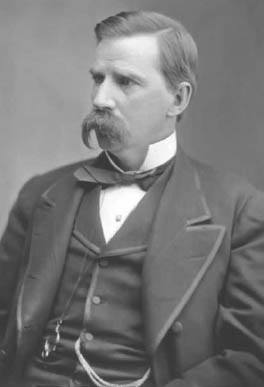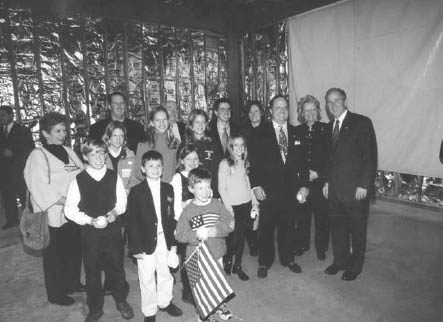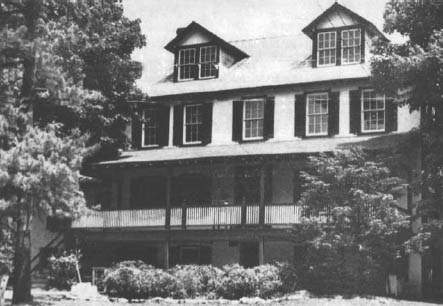Remembering Conshohocken and West Conshohocken (17 page)
Read Remembering Conshohocken and West Conshohocken Online
Authors: Jack Coll

The Flocco family has been doing business and providing services in the borough of Conshohocken for more than eighty-five years. The family has owned and operated businesses on both sides of Fayette Street since 1926. Posing in this 1986 photograph, standing outside their store, members of the Flocco family include Joseph, Vincent Jr., Vince Sr., his brother Fred and Anthony.
Conshohocken's business district is much smaller than it was eighty years ago in 1930, but as in many small towns in America, these business owners know and understand their customer. It's about the courtesy extended, the grief shared with a loss, the overwhelming feeling that's shared when a customer announces a family newborn and the unlimited respect given to any stranger who chooses to do business with a family-owned business.
Businesses owned, operated and passed on to later generations of the families include the Flocco family's shoe and clothing business. The Totaros have been feeding familes for more than eighty years, and the Boccella family restaurants have been serving cheesesteak sandwiches for several generations. There are also family funeral directors the Moores, Snears and Ciavarellis, who have long buried members of the Conshohocken community, and Rudy Lincul, who has cut hair for nearly half a century, like his father Anthony who cut hair before him. Jimmy Del Buno continues to work seven days a week fixing, replacing and installing new roofs, like his father before him.
Family businesses new to the business districtâNick DiRenzo, a general contractor working with his son; DeStefano Electric; Coll's Custom Framing; the Great American Pub; Wilson's Gulf Station; Schank Printing; Spamps Restaurant; Ondik Insurance; and Storti CPA, just to name a fewâare all passed along to the next generation from father to son or father to daughter.
A Few Conshohocken Gems
H
ANNIBAL
H
AMLIN, A
G
UEST OF
T
HE
W
OODS
Whenever I say Hannibal Hamlin, the reply is immediate: “Hannibal who?” Hannibal Hamlin was the twenty-sixth governor of Maine and later the vice president of the United States of America. Hamlin served under President Abraham Lincoln during his first term as president from 1861 to 1865.
Alan Wood Jr., who built his home on East Fifth Avenue in 1859, became a United States congressman in 1866. While serving in Washington, D.C., he met and became good friends with Hannibal Hamlin, who would later spend time at the Woods' home in Conshohocken with Alan and his wife, Mary. Hamlin would occasionally spend the night as a guest of the Woods, marking the very first visit from a president or vice president, sitting or past, within the borough limits. The Woods' home was willed to the borough of Conshohocken in 1918 and is called the Mary Wood Park.
OVERNOR
J
OHN
F. K
ENNEDY
M
ISSES
C
ONSHOHOCKEN
On a cold, rainy Saturday in October 1960, Senator John F. Kennedy was visiting the nearby Bala Cynwyd community. On the campaign trail for the presidency of the United States, Kennedy's motorcade was supposed to travel on Ridge Avenue in Roxborough, through Whitemarsh Township, on to Butler Pike and into Conshohocken. There was a ribbon-cutting ceremony scheduled at the borough line located at Thirteenth Avenue, with brief remarks from Kennedy and Conshohocken burgess James “Pat” Mellon. For unexplained reasons, the motorcade route was changed at the last minute, and Kennedy traveled the expressway and exited at West Conshohocken, missing Conshohocken. Senator Kennedy stopped at the War Memorial in West Conshohocken, spoke to the crowd in the rain for ten minutes and was on his way to Roosevelt Field in Norristown, with stops in Swedesburg and Bridgeport. As history now tells it, Senator John Kennedy was elected the thirty-fifth president of the United States just thirteen days after visiting West Conshohockenâthirteen days after missing his visit to Conshohocken.

Hannibal Hamlin was the former vice president to Abraham Lincoln during Lincoln's first term as president of the United States from 1861 to 1865. Hamlin was a visitor to Conshohocken as a guest of Alan Wood Jr. and his wife, Mary. Wood, an East Fifth Avenue resident, became a United States congressman in 1866 and befriended Hamlin while serving his term in Washington, D.C.
Kennedy wasn't the only presidential candidate to miss Conshohocken. Theodore Roosevelt, making his third run for the White House, was scheduled to stop at the Reading Railroad station and deliver a three-minute speech to borough residents. On April 11, 1912, thousands of residents gathered at the station. Schools were closed so the students could gather to hear the former president speak; mills and factories along the river were shut down. Roosevelt's special train pulled into Conshohocken but never stopped. Roosevelt waved from the back of the train, but the train kept moving on to Norristown. It was later explained that the conductor made a mistake and hadn't received word that Conshohocken was a stop.
HE
F
IRST
L
ADY
, D
URING AND
A
FTER
On September 20, 1994, First Lady Hillary Rodham Clinton visited Conshohocken to speak on the topic of healthcare. Mrs. Clinton headed a commission established by her husband, Bill Clinton, to come up with a healthcare reform legislation package. The first lady's conference was originally scheduled for a site in Bala Cynwyd but was changed to the Discovery School in Conshohocken at the last minute. Clinton's visit was brief, lasting about an hour and a half, but it marked the first visit by a first lady to the borough of Conshohocken.
Hillary Clinton returned to Conshohocken as a presidential candidate on Pennsylvania's primary Election Day, April 22, 2008. She spent two hours outside a polling place located at the Conshohocken Fellowship House. She was extremely gracious, speaking with everyone who came out in support of her. When the votes were counted later that evening, Clinton won the primary in the state of Pennsylvania, taking 55 percent of the vote over Barack Obama.
INALLY
, C
ONSHOHOCKEN
G
ETS A
P
RESIDENTIAL
V
ISIT
More than 150 years after the borough's incorporation, Conshohocken finally got a visit from the president of the United States when George W. Bush came to the borough for the purpose of signing the Brownfield Revitalization Act into law. On Friday, January 11, 2002, more than one thousand residents stood in a steady rain to gain entrance into the Millennium Corporate Center, owned by Brian O'Neill, to hear the president speak. Mayor of Conshohocken Robert Frost called it a historic event, noting how proud he was at a time when the national spotlight was centered on the borough and its revitalization effort. The Bush motorcade crossed the Matsonford Bridge, to the delight of thousands of borough spectators, and following the event, the president spent time with many borough officials.

On January 11, 2002, George W. Bush, the forty-third president of the United States, pulled into Conshohocken as a guest of the O'Neill family and signed the Brownfield Revitalization Act into law. President Bush spent time with members of the O'Neill family following his speech to more than one thousand guests and residents.
HE
P
INES
Few residents in Conshohocken today will remember “the Pines,” once located at Ridge Avenue and Butler Pike. The property was originally a four-acre farm owned by the Yerks family, and in 1891, Mrs. Howard Wood, daughter-in-law of industrialist Alan Wood, rented the farm and prepared it for occupancy to give a holiday for girls who worked in the shops throughout Conshohocken. But Mrs. Wood found a greater need, using the property to give underprivileged mothers from the city of Philadelphia and their children a vacation for two weeks for each family in the summertime.
Mrs. Wood died in 1895, and her friends and family purchased the Yerks farm, rebuilt the barn to house up to 65 guests and set up a schedule to accommodate five two-week intervals, bringing as many as 375 mothers with their children each summer. The vacations for the mothers were paid for by charitable donations raised in Conshohocken by two groups, the Mothers of the Pines Club and Willing Workers.

The Pines, once located on Ridge Pike just off Butler, was formerly owned and operated by members of the Yerks family. But from 1892 to 1966, the old farmhouse served as a summer retreat for underprivileged mothers from the city of Philadelphia. The building was razed in 1967, and a six-story office building now occupies the site.
The twelve-day vacation for the mothers was spent relaxing and resting on lawn chairs placed under the spreading pine trees, while the children were kept busy with all-day events. Outdoor cooking and all cleaning were handled by a volunteer staff, and the evenings were filled with family events, singing and games.
The Pines operated for seventy-two years until 1966, when it was determined that the need for vacations in the country for working and underprivileged mothers and their children was less urgent than the needs of handicapped children. The Pines organization sold the property and donated more than $200,000 to the Child Development Center Pines Building, which was dedicated on October 13, 1966, and is still located at 1605 West Main Street in Norristown.
An engraved stone marker is located at the entrance of the Child Development Center Building and reads, “The Pines 1891, C.D.C. 1966,” marking the date of the founding of the Pines and the date of the founding of the Child Development Center. The Pines buildings were demolished, and it is the current site of the Montgomery County SPCA and Whitemarsh Office Plaza.
ONSHOHOCKEN
'
S
O
NLY
H
OSPITAL
World War I took a toll on the lives of Conshohockenites, and worldwide, sixteen million lives were sacrificed. The influenza epidemic that swept the world in 1918 killed an estimated fifty million people. One-fifth of the world's population was attacked by this deadly virus, forcing the borough of Conshohocken to open a hospital to handle the many flu-bitten residents.
The Conshohocken Calvary Episcopal Church, located at Fourth Avenue and Fayette Street, opened a forty-bed hospital, and within the first five days, four patients had died and thirty-three more patients were in comfortable hospital beds receiving the best of care. The Church Hospital was established in a matter of a few days. The managers of the Pines offered the entire fleet of iron bed stands, mattresses, bedding, linens and washstands.
Conshohocken schools and church services were canceled. No public gathering of any kind was permitted, and no residents were permitted to go to funerals if it wasn't a family member being buried. The second day the hospital was in operation, a young pregnant woman gave birth to a healthy baby girl. Within four days, family members removed the baby and took her directly to St. Mary's Church to be baptized.
